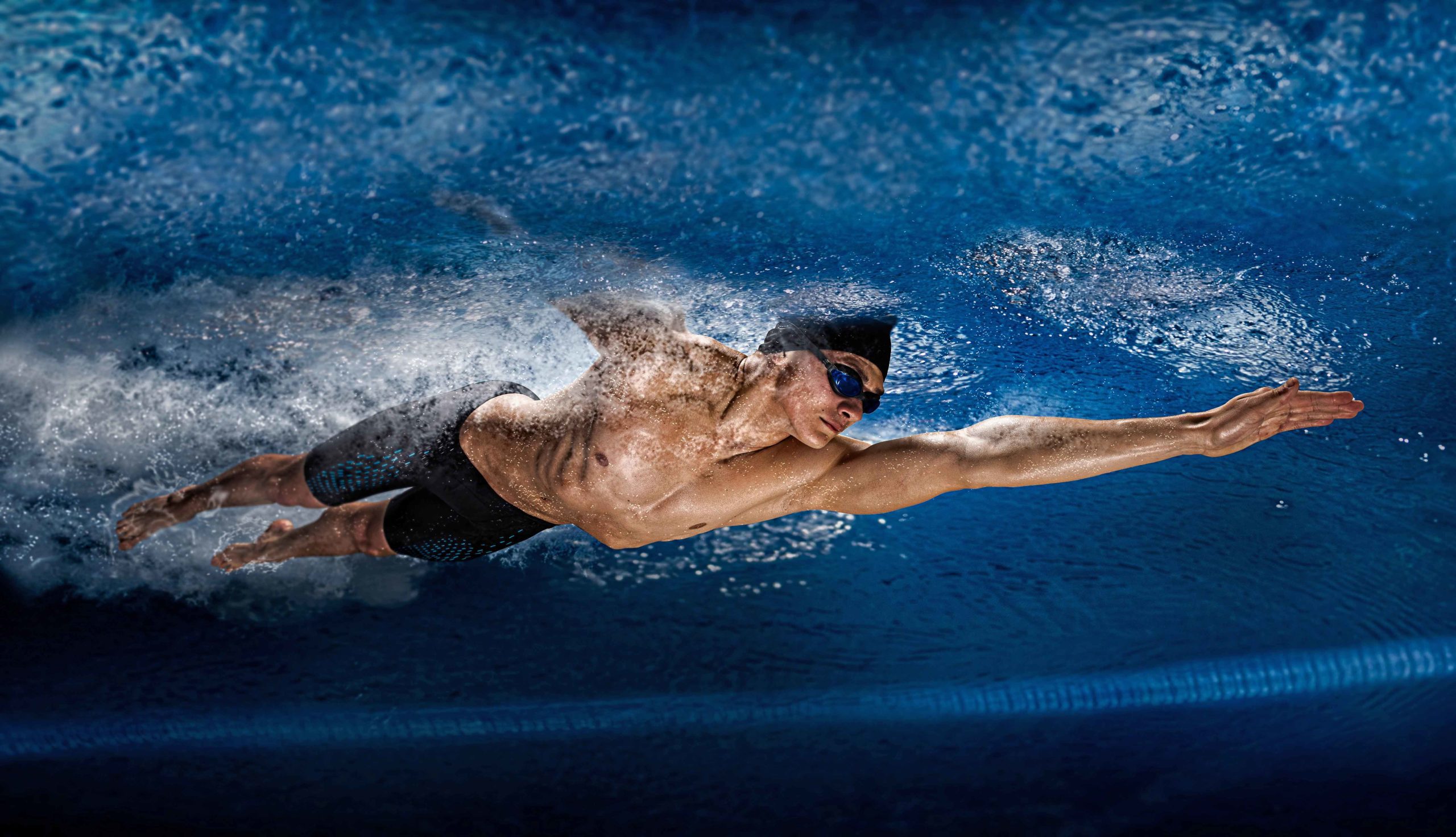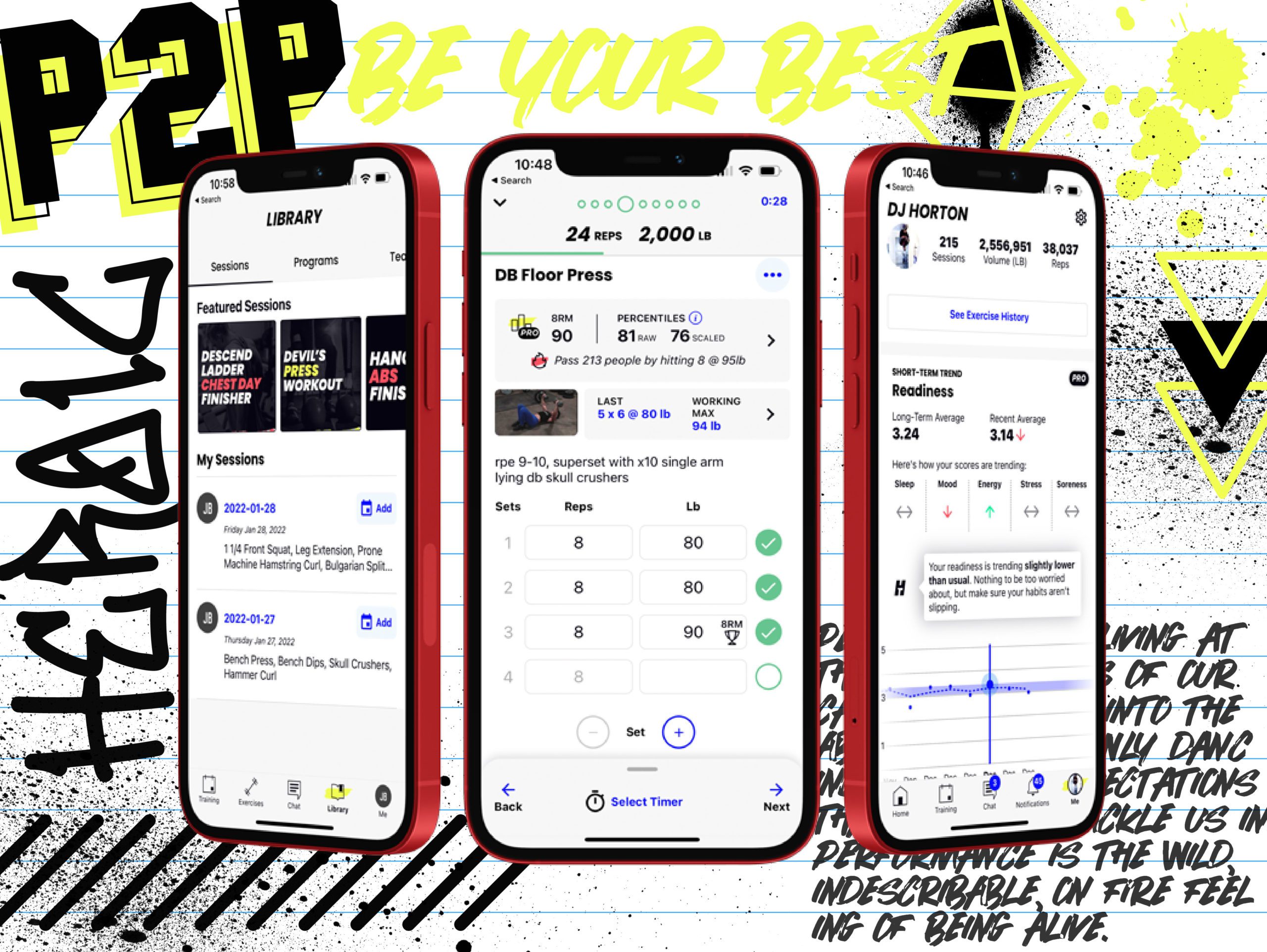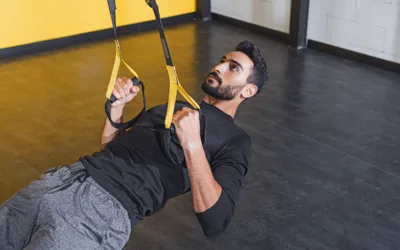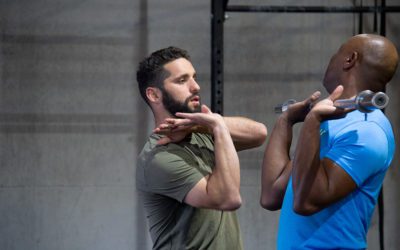Strength Training for Swimmers

If you’re looking to improve your time in the water, you might want to consider doing some work on the land. Constantly working your shoulder joints and muscles in the pool can lead to poor posture and overuse injuries, which keeps you from getting faster.
Chris Ritter has a passion for helping swimmers get stronger on land to become faster in the water. He is the founder of SURGE Strength where he’s created dryland training for athletes of all levels and certification programs for coaches. In this blog, he’ll cover the importance of adding dryland training as a swimmer, as well as how to program strength training for faster times in the water.

Why Do Swimmers Need Weight Training?
Triathletes, hobbyists, functional fitness warriors, and ironman competitors can all benefit from stronger swim technique and faster times. Give yourself the biggest advantage at hitting a new personal best in the water with intelligent strength programming.
Strength training for swimmers can be challenging on or off season. To make the most of your gains in the pool, you need to understand the sport of swimming, what makes a faster swimmer, and dryland programming tips.
A transfer from the weight room to the pool depends on a few unique variables that are sport-specific. We’ll also explore how to make sure you don’t train in a way that can increase your chance of injury.
Let’s dive in!
The Swimmer’s Struggles
Swimmers train the most hours per week among many competitive athletes. Double (or even triple!) practices a day are not uncommon.
The amount of hours put in the pool often causes negative effects in many swimmers’ postures. These include the extremes of upper crossed syndrome (tight, unbalanced upper body) and a rounding of the thoracic spine. These imbalances and tight tissues can cause other weaknesses down the body’s kinetic chain.
Often the traits that would maximize an athlete’s potential in the weight room are prohibitive in improving their swimming speed. Height is an obvious one. Swimmers are usually on the taller side. That alone is going to limit the amount they can mechanically squat or deadlift because of longer lever arms.
Another common trait of swimmers is that they’re typically hyper-mobile especially in their shoulders. This needs to be closely monitored in the weight room so a swimmer doesn’t injure themselves doing an exercise because of their hyper-mobility.
I like to lump these challenges together and call them the “eternal struggle for a swimmer.” Understanding this is especially helpful if you’re new to swimming.
You Work too Hard to Not See Progress
Find Your Perfect Training Plan
Options for Every Goal
Training plans from real coaches covering any goal, fitness level, and number of sessions per week.
The Best Coaches
Get coached by the best. Olympians, ex-NFL stars, Titan Games Winners, Sport Scientists and more.
Starting at $1/ day
With many options including a free 7 day trial, you can try out programming before you commit.
How to Become a Faster Swimmer
Maintain/Improve Your Mobility
The first is that swimmers need to be mobile. That may be a little confusing because we just discussed how many swimmers are hypermobile. The sheer amount of work volume that swimmers do puts a LOT of stress on their posture. Therefore one of the first priorities of a strength/dryland program for swimmers should be to ensure mobility is at least maintained. Even better if it can be improved, especially for the thoracic area and shoulder mobility.
Develop Muscular Endurance
The second area to focus on is creating and maintaining full-body tension through muscular endurance. This may seem too simplistic at first. But if you think about it, as a swimmer, you are suspended in water for most of your race. The only time you can produce ground reaction forces is during your start off the block and turns on the walls. This is why core training is so crucial. It allows you to create a tension platform from which your arms and legs can generate force and sustain it.
Level Up Your Training
With TrainHeroic’s immersive training app
TrainHeroic does everything you wish your old gym notebook could do.
Take the guesswork out of training with built-in exercise instruction and basic training programs. Compete against yourself and others. Track your performance and readiness. Smash your goals.

Strength Programming Tips & Tricks for Swimmers
Most strength coaches understand the different categories of movements and exercises that you can prescribe in a program. I like to work from five different categories: hinge, squat, push, pull and brace (core). Within each of these categories you can break them down into subcategories depending on what plane the movements are being performed in.
Through working with thousands of swimmers from around the world, I’ve found that at a minimum you need to ensure a 1:1 ratio of push-to-pull and squat-to-hinge exercises. But doing a 1:2 ratio can get you even better results! This means working in slightly more pulling and hinging than pushing and squatting.
In the strength training world, you hear a lot about “balanced training,” but specific sports like swimming are inherently “unbalanced” in the nature of the work. Swimmers do a ton of shoulder and tricep work in the pool, so accounting for those strengths in your programming could mean balancing out your dryland work with the opposing muscle groups.
A successful strength/dryland program should bias the movements that swimmers do less of in the pool. The balance comes from putting together what an athlete is doing in the water AND on land.
Putting in some work in the weight room can be extremely rewarding as a swimmer – especially when you are confident in your approach. Try including some of these elements in your dryland training and see your times improve in the pool.
Want Training Tips, Exercise Guides & Knowledge Bombs Sent to Your Inbox?
Sign up for the FitNerd newsletter from TrainHeroic
Related articles
Working Out During Ramadan: Maintaining & Making Gains
It’s falsely believed by many Muslim athletes that Ramadan = losing progress (gains!). This isn’t the case if you train, fuel, hydrate, and sleep appropriately. Of course that’s easier said than done, but following a few of these strategies can make all the difference...
The Ultimate Low Back Training Guide: Tips for a Stronger Spine
Low back pain sidelines countless athletes and gym-goers. But here’s the truth: your lower back doesn’t need endless isolation work to stay strong. The real secret? A smart mix of direct and indirect training strategies. This guide breaks it all down, giving you...
6 Practical Tips for New S&C Coaches
You’ve got the degree, passed the certs — you're ready to do the job. Your real coaching journey is just beginning. Success isn’t just about knowing the science, it’s about growing as a leader, communicator, and lifelong learner. Here are six tips to help you navigate...

Join the community
Sign up for the latest training news and updates from TrainHeroic

About TrainHeroic
Support
Made with love, sweat, protein isolate and hard work in Denver, CO
© 2021 TrainHeroic, Inc. All rights reserved.





